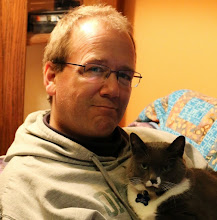
Gone With the Wind
Victor Fleming, with scenes also directed by George Cukor, Sam Wood, William Cameron Menzies and Sidney Franklin, 1939
Previous Contact: I'd actually never seen Gone With the Wind before, except for twenty minutes worth in high school. It's only here so late in the series because there was a ginormous queue for not many copies at the library.
---
Gone With the Wind begins with a montage of sentimental images of the antebellum South behind these words:
There was a land of Cavaliers and Cotton Fields called the Old South. Here in this pretty world, Gallantry took its last bow. Here was the last ever to be seen of Knights and their Ladies Fair, of Master and of Slave. Look for it only in books, for it is no more than a dream remembered, a Civilization gone with the wind.Happily, this turns out to have nothing whatsoever to do with the actual content of the film, but it is a disturbing way to kick things off and points a big, fat finger at what the problem is going to be for somebody who, like me, watches the movie for the first time in middle age. Seventy years old but looking twenty years younger -- it was a very early color movie -- Gone With the Wind can't help but embody the values of an earlier stage of our civilization, now gone with the wind. Cases in point are many. Arguments between the heroine and her slave are presented as comic relief: the heroine always wins because she owns the person she's arguing with, get it? Slavery, amIright?!? The men in the film are implicitly but favorably shown sneaking off to join the Klan. The heroine experiences a shockingly blunt marital rape, and likes it -- you know how women are. "Yankee Carpetbaggers" are portrayed with all the sensitivity to historical nuance that you might have expected from, say, George Wallace in 1963.
Now, I am very, very aware that this kind of thing is not the fairest yardstick with which to measure this film, and I want to refer you directly to Ebert's own review, which makes a nice argument for some of the film's progressive ideals at the time it was made. Scarlett O'Hara, he argues,
was a woman who wanted to control her own sexual adventures, and that is the key element in her appeal.... She was the symbol [for empowered women] the nation needed as it headed into World War II; the spiritual sister of Rosie the Riveter.
Scarlett O'Hara is indeed an interesting character. She shows a lot of strength and ability as a woman determined to forge some kind of viable existence in the chaos and turbulance of the Civil War and its aftermath. But she is tough to like, too, as someone whose refusal to acknowledge the nature of her own emotions leaves, like Sherman's army, a wide swath of human suffering in its wake. Well, she is supposed to be a complex character. The performance (by Vivien Leigh) is widely held to be an acting triumph, but here again I am in the wrong or at least the minority -- Leigh's acting seems stilted and amateurish to me (her accent, for instance, is all over the map).
Now, I have written all this at my own peril, as I was under considerable social pressure to like this movie. I am told that for many it casts an almost magical spell, creating a vividly romantic world where events of high and moving passion, tragedy, and excitement occur. I wanted to like it. And it goes without saying that, in disliking Gone With the Wind, I represent a thin minority among seven decades of moviegoers.
Plot: An episodic, highly romantic look at upper-class life in the American South before, during, and after the Civil War. A spoiled young woman is thwarted in her adolescent romantic plans and traumatized by the sack of Atlanta, and subsequently rules her own life and those of everyone around her with something of an iron fist. Her adventures and indiscretions create one emotionally fraught situation after another, and the movie is kind of like those sportscasts that only show the goals: every scene is a moment of high drama. Yet, it's like four hours long.
Visuals: Somewhat uneven, probably due to serious personnel problems in the movie's production (note the list of directors, above). Some extremely effective outdoor shots, especially an amazing one that pulls back from a few wounded men until it is showing a vast railroad yard full of thousands of hurt and dying Confederate soldiers. Lots of grand costume drama with fancy antebellum dresses too, if you are into that sort of thing.
Dialog: The problem with an episodic movie of such length is that the characters are always having to explain anew what's going on. It makes natural dialog hard -- although, having said that, the dialog writing really is pretty good. Lots of memorable lines and quotable speechifying.
Prognosis: Ah, hell, I dunno. It's a cultural literacy piece, if nothing else. I'm glad I saw it, if only because I understand a little chunk of American cultural history now that I didn't before. And, maybe you'll fall under the magical spell. Just because I didn't, doesn't mean you won't.



























